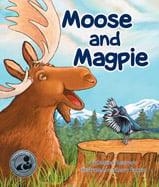Alignment to Standards for UT

| Grade | Number | Standard |
|---|---|---|
| 1 | CC-1.III.2d. | Describe how plants and people need, use, and receive water. |
| 2 | CC-2.III.1 | Investigate relationships between plants and animals and how living things change during their lives. |
| 2 | CC-2.III.1a. | Observe and describe relationships between plants and animals. |
| 2 | CC-2.III.1b. | Describe the life cycle of local plants and animals using diagrams and pictures. |
| 4 | SC-4.V | Students will understand the physical characteristics of Utahs wetlands, forests, and deserts and identify common organisms for each environment. |
| 4 | SC-4.V.2 | Describe the common plants and animals found in Utah environments and how these organisms have adapted to the environment in which they live. |
| 4 | SC-4.V.2a. | Identify common plants and animals that inhabit Utahs forests, wetlands, and deserts. |
| 4 | SC-4.V.2b. | Cite examples of physical features that allow particular plants and animals to live in specific environments (e.g., duck has webbed feet, cactus has waxy coating). |
| 4 | SC-4.V.2c. | Describe some of the interactions between animals and plants of a given environment (e.g., woodpecker eats insects that live on trees of a forest, brine shrimp of the Great Salt Lake eat algae and birds feed on brine shrimp). |
| 5 | SC-5.V.1d. | Contrast inherited traits with traits and behaviors that are not inherited but may be learned or induced by environmental factors (e.g., cat purring to cat meowing to be let out of the house; the round shape of a willow is inherited, while leaning away fr |
| 5 | SC-5.V.2 | Describe how some characteristics could give a species a survival advantage in a particular environment. |
| 5 | SC-5.V.2c. | a particular physical attribute may provide an advantage for survival in one environment but not in another (e.g., heavy fur in arctic climates keep animals warm whereas in hot desert climates it would cause overheating; flippers on such anim |
| K | CC-K.III.2 | Observe and describe animals in the local environment. |
| K | CC-K.III.2c. | Describe how animals care for their young. |
| K | CC-K.III.2e. | Distinguish between real and make-believe animal behaviors. |